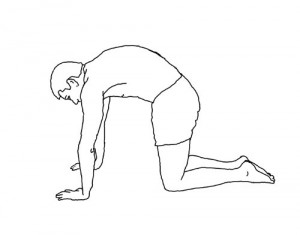Stretching is an instinctive behavior. All animals, including humans stretch regularly. Why? Because it feels good and it gets you moving more easily. Here are some of the reasons stretching is good for you:
- Stretching breaks the micro-adhesions that can form within muscles, tendons, ligaments and fascia. When two membranes that normally slide past each other, like muscle fibres or the collagen fibres in connective tissue, are held immobile for more than a few hours microscopic adhesions form (viscous threads in the interstitial fluid between the membranes). The more dehydrated the tissue is the faster they develop. Stretching slides those membranes along again restoring the normal mobility.
- Stretching stimulates the capillary beds to open up increasing the circulation to the tissues. This brings oxygen and nutrients to the cells invigorating them for activity.
- Stretching also, by breaking the adhesions, opens up the lymphatic drainage channels. The lymph, the fluid in your body that’s outside the blood vessels, is like the garbage disposal, oozing the cells’ metabolic waste away to be recycled.
- Stretching encourages your connective tissue to adapt and become more elastic. This connective tissue elasticity is terribly important to your body. When you are suddenly unexpectedly jarred, like in a fall, the elasticity in these tissues acts as a shock absorber until your muscles can react a split second later to protect you. This shock absorbing function also protects your knees, hips and spine with every step you take on pavement. As you age you become less elastic, but stretching can slow that process down.

